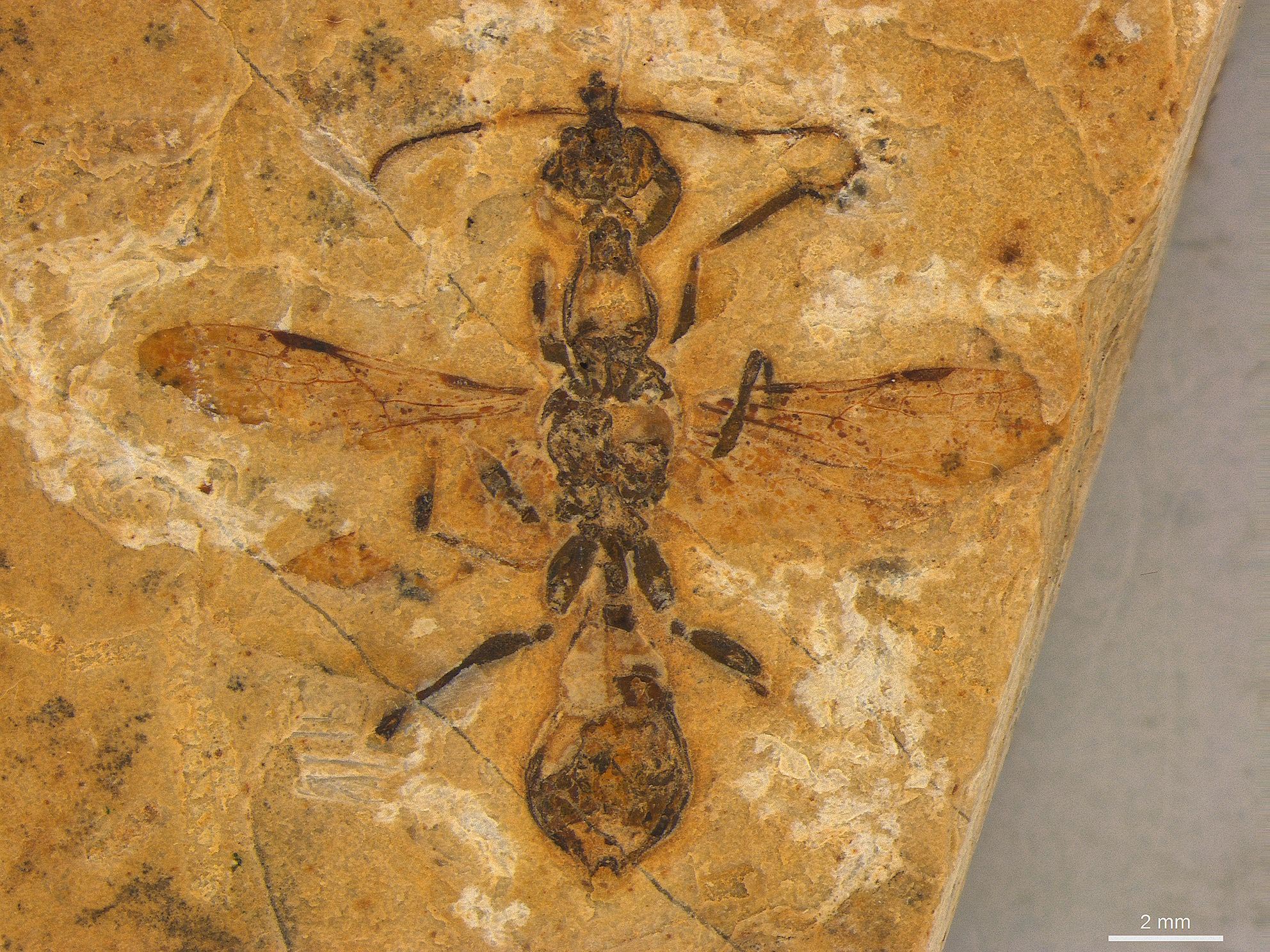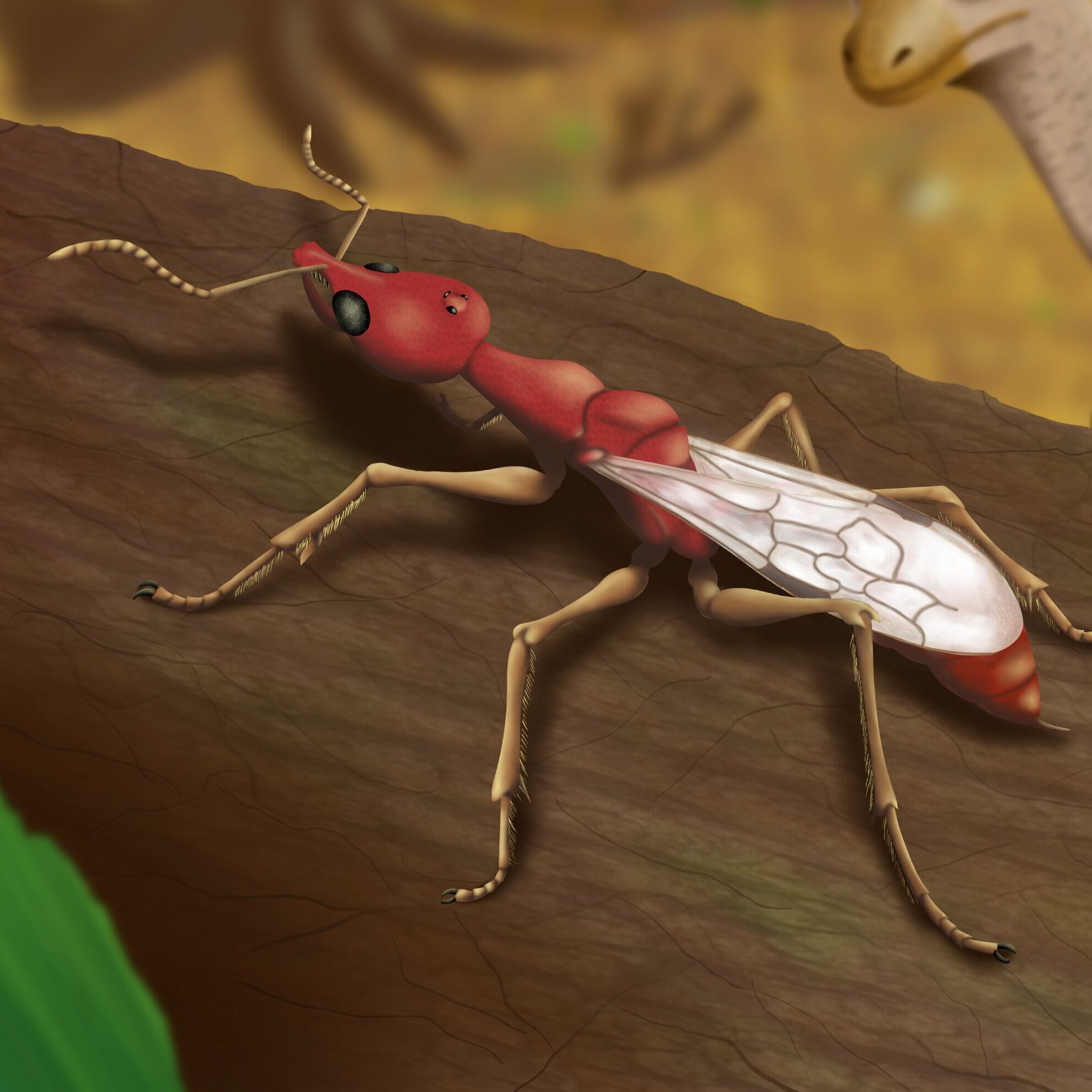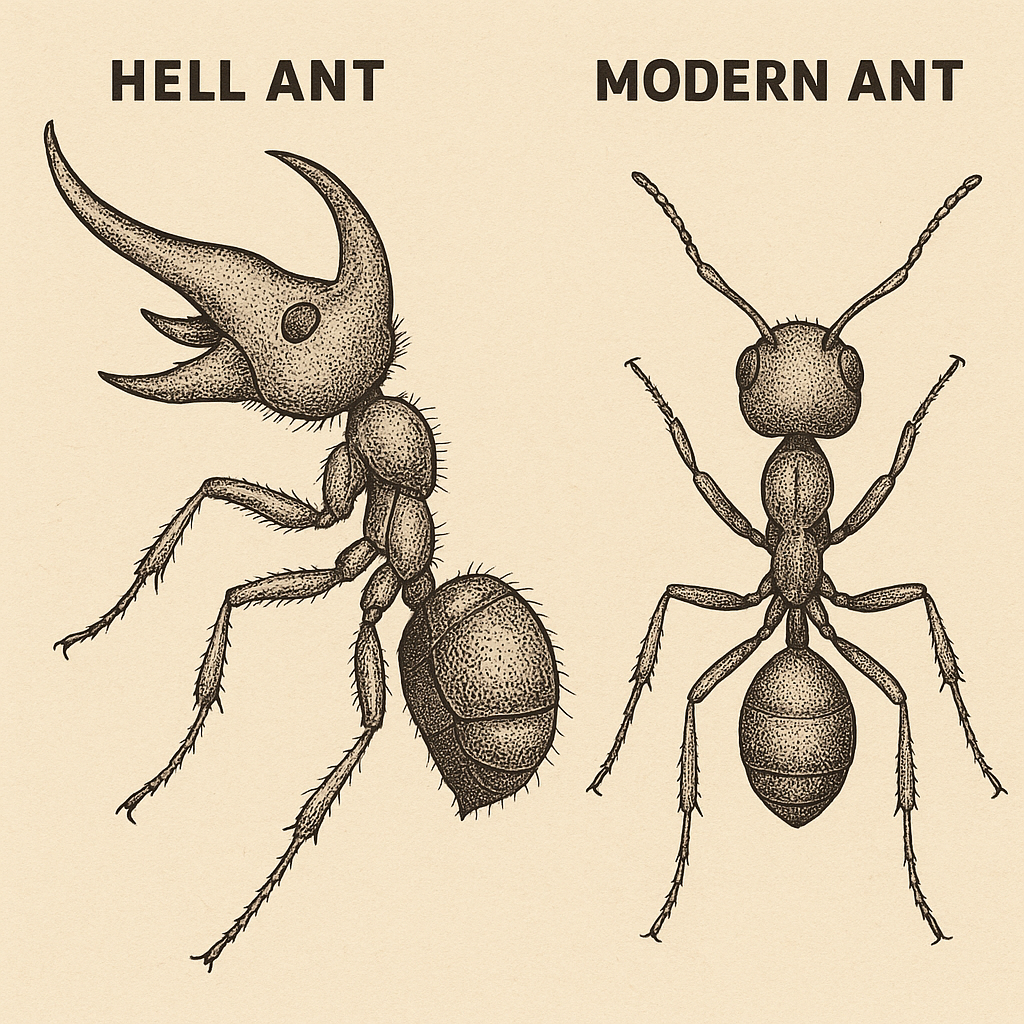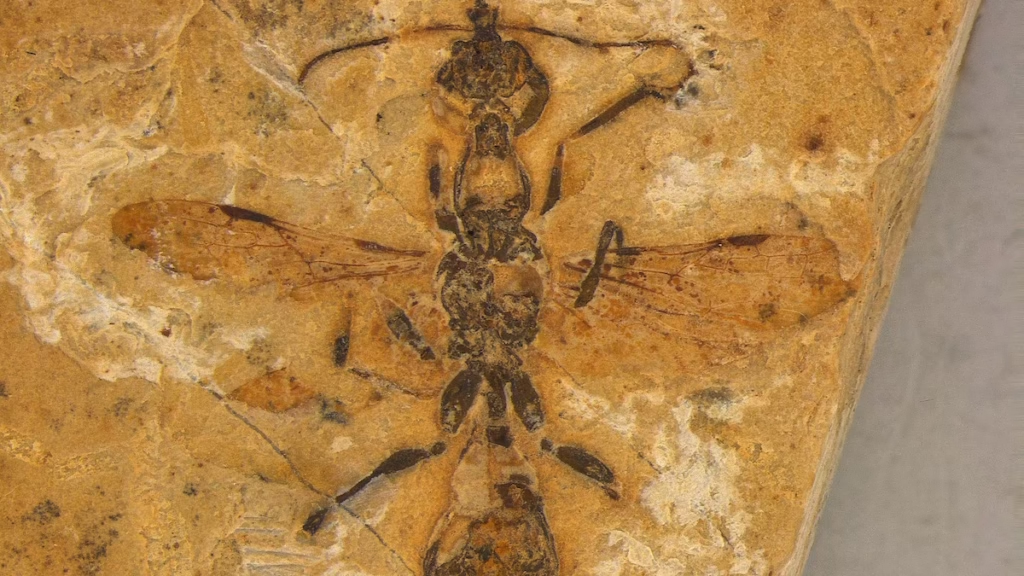“The 113-Million-Year-Old Hell Ant: Scythe-Jawed Predator from the Age of Dinosaurs”

In a remarkable window into the deep past, paleontologists have uncovered the oldest known ant species, a 113-million-year-old insect now classified as a “hell ant.” Preserved in ancient amber, this terrifying yet fascinating ant once roamed the lush Cretaceous forests at the time of dinosaurs. With its scythe-like mandibles and unique horned head, this species represents a now-extinct lineage unlike any ant alive today.
The discovery not only pushes back the timeline of known ant evolution but also offers crucial insights into how early ants hunted, fed, and competed for survival in a vastly different ecosystem.
What Are ‘Hell Ants’?
Hell ants (subfamily: Haidomyrmecinae) are an extinct group of early ants that lived during the Cretaceous Period, approximately 145 to 66 million years ago.
☠️ Distinct Features:
- Vertically moving, scythe-like jaws that snapped upward toward a horn on the head
- A unique feeding mechanism not seen in any modern ant
- A flattened, armored appearance, almost beetle-like
- Specialized for grasping and impaling prey, possibly soft-bodied insects or larvae
Unlike modern ants, which use sideways pincers, hell ants had trap-like mandibles that worked in tandem with a horn or protrusion on the top of the head to hold prey in place—an evolutionary adaptation both deadly and specialized.

The Discovery: Fossilized in Amber
🧬 Where It Was Found:
- The fossil was found in amber deposits in northern Myanmar (Burma)—a region famous for preserving ancient Cretaceous life in incredible detail.
🧠 Who Found It:
- A team of paleontologists led by Phillip Barden, an evolutionary biologist at the New Jersey Institute of Technology (NJIT), first described the species in a 2020 research paper.
🐜 The Species:
- Named Ceratomyrmex ellenbergeri, the fossilized ant was caught in the act of clamping its jaws around its prey, providing a frozen-in-time snapshot of prehistoric behavior.
This specimen represents one of the earliest and most complete examples of ant predation ever discovered.
Dating the Fossil: 113 Million Years Old
⏳ Geological Context:
- The amber fossil dates to the early Cretaceous period, around 113 million years ago.
- At that time, dinosaurs roamed the Earth, flowering plants were emerging, and the first early birds took flight.
- Insect diversity was beginning to explode, and ants were just starting to evolve as a distinct lineage.
This pushes back the origin of ants significantly and helps scientists reconstruct their ancestral traits.
Why This Discovery Matters
🔍 1. Oldest Known Ant
The hell ant fossil represents the earliest confirmed evidence of ant species. Prior to this, most ant fossils came from later Cretaceous or Eocene periods.
🧬 2. Evolutionary Missing Link
It showcases a transitional morphology, blending features of wasp-like ancestors with traits of modern ants. It suggests early ants were solitary hunters before evolving complex social systems.
⚔️ 3. Unique Prey-Capture Mechanism
Hell ants used a method of attack unlike anything seen in living insects. Their scythe-like jaws and head-horn formed a natural trap mechanism, showing convergent evolution with other predatory adaptations.
🧠 4. Behavioral Insight
Because the fossil shows the ant mid-hunt, it offers rare behavioral data, proving how these ancient insects functioned in their ecosystems.
Hell Ants vs. Modern Ants: Key Differences
| Trait | Hell Ants | Modern Ants |
|---|---|---|
| Jaw movement | Vertical (upward scythe motion) | Horizontal (side-to-side) |
| Head features | Horns or protrusions | Smooth or specialized for tasks |
| Social structure | Possibly solitary | Mostly eusocial (colonies) |
| Era | Cretaceous (~113 million years ago) | Evolved into modern forms ~80 Mya |
| Extinction | Yes, extinct by the end-Cretaceous | No, diversified into 13,000+ species |

The Evolutionary Story of Ants
Ants are part of the order Hymenoptera, which also includes bees and wasps. Modern ants likely descended from wasp-like ancestors, developing colony behavior over millions of years.
🌱 Evolutionary Timeline:
- ~120–130 Mya: Wasp-like ancestors emerge
- ~113 Mya: Hell ants like Ceratomyrmex evolve
- ~90–80 Mya: First evidence of eusocial (colony-based) ants
- Today: Over 13,000 ant species, with highly structured societies
Hell ants represent a dead-end branch of the ant evolutionary tree—but one that tells us what early experiments in insect evolution looked like.
Extinction of the Hell Ants
By the end of the Cretaceous period (~66 million years ago), hell ants vanished, likely victims of:
- Mass extinction events (e.g., the asteroid that wiped out the dinosaurs)
- Competition from more adaptable, eusocial ants
- Loss of niche habitat or prey species
Their unique predatory features, though effective, may have been too specialized to adapt to changing ecosystems.
Scientific Techniques Used in Study
Researchers used advanced imaging to study the amber-encased specimen:
- X-ray micro-CT scanning
- 3D modeling
- Morphometric analysis
This allowed scientists to reconstruct the jaws’ movement, understand muscle attachments, and simulate how the ant functioned in life.
Public Impact and Cultural Fascination
The hell ant’s fearsome appearance and fossilized predation have captivated not just scientists, but the public imagination. They’ve been called:
- “The Alien of the Cretaceous Forest”
- “The Dinosaur Era’s Deadliest Insect”
- And even “Antzilla”
The discovery was widely reported in Nature, National Geographic, and science outlets, drawing parallels with fictional alien life and prehistoric horror.

Conclusion
The unearthing of a 113-million-year-old hell ant is more than just an exciting fossil find—it’s a portal into Earth’s ancient, mysterious ecosystems. With its blade-like jaws and eerie, horned head, Ceratomyrmex ellenbergeri tells a story of evolutionary innovation, predatory specialization, and eventual extinction.
It also reminds us of how much of life’s history remains locked away in amber, stone, and time—waiting to be rediscovered.




